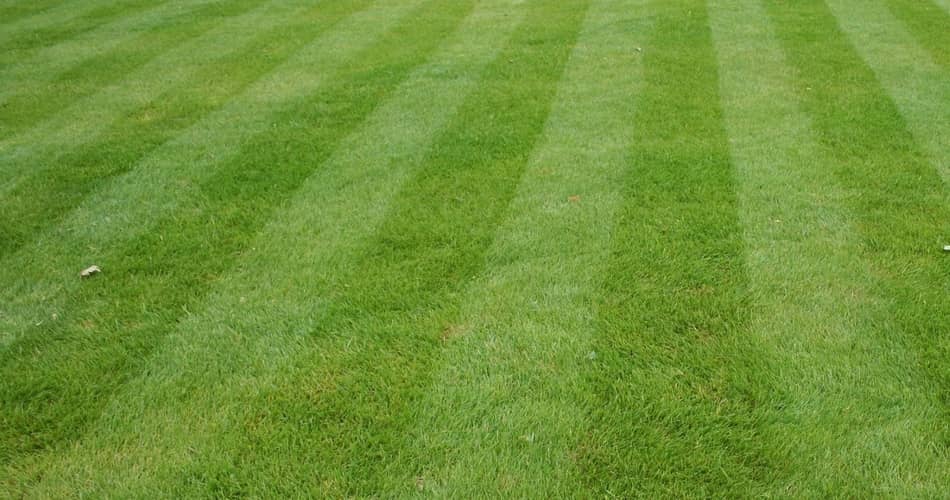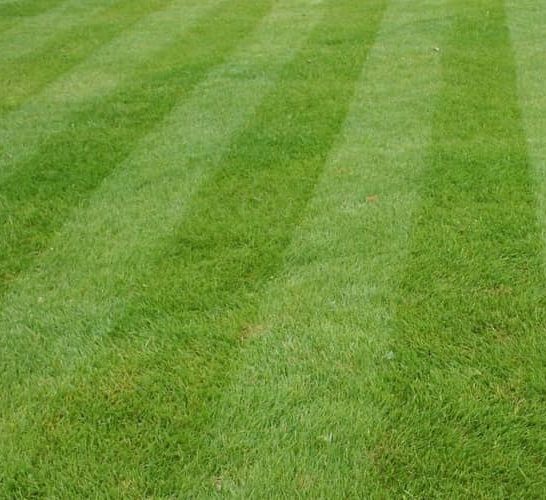Do you have what it takes to stripe your yard like the professionals? Do you want your lawn to be the envy of your neighborhood? Everyone wants their yard to look like the baseball field they see on television.
Truth is, what you see on television is most likely paint or artificial turf. If it is grass, it takes a lot of time to care for the turf. Professional stadiums often have separate turf sites where they grow grass to transplant onto fields to fill in holes and damaged turf areas.
You may notice golf courses with the perfect stripes down their fairways. They don’t use paint or turf to achieve their amazing stripes.
Golf clubs and country clubs spend a lot of time and money on the turf to get it to grow and look great. I’m pretty sure you don’t want to spend that amount of money or time on your grass.
So how do you achieve a great stripe on your lawn without investing a lot of time and money? Stick with me and I will tell you about striping your grass to make it appear like you put a lot of time and effort into it when you really didn’t.

This post may include affiliate links. Purchases made through these links may provide a commission for us, at no extra cost to you. As an Amazon Associate, we earn from qualifying purchases.
Follow all safety instructions provided in your equipment operator’s manual prior to diagnosing, repairing, or operating.Consult a professional if you don’t have the skills, or knowledge or are not in the condition to perform the repair safely.
Tips for Creating a Stripe on Your Lawn
- Use a mower with a fast blade speed of around 18,300 fpm
- Keep your grass long for the best striping effect
- Maintain a healthy lawn to reduce thin spots and weeds
- Adding a roller or flap can intensify the stripe
- Focus on an object in the distance to create a straight line and prevent wavy ones
- Mow around obstacles and then mow over these paths by continuing your striping pattern
What Kind of Grass Works Best to Stripe My Lawn?
First, you are not going to get a nice-looking stripe if your yard does not have somewhat healthy grass. What I mean by that is you need nice, lush grass. You cannot create a stripe with a bunch of weeds in your yard.
You will need to have a full lawn without holes or thin spots in the yard that are noticeable. If you keep your lawn watered and keep the grass about 3″ tall throughout the summer, then chances are you can have a striped lawn.
All kinds of grasses can be striped although some types show a better stripe than others. Kentucky blue, bent, rye, fescues, and many other blends, even Bermuda grass in southern states, can be striped.
Even though Bermuda grass can be striped, it will not be as easy to see the pattern as it will be on the longer grasses.
Stripe Your Lawn with the Right Piece of Equipment
With a Roller or Flap Installed
A golf course spends upward of $20,000 on a greens mower to cut and stripe grass. We can’t make that kind of investment in our own yards.
What kind of mower should we use? All we need is a couple of things to make our mower create a good-looking stripe. If you look at a golf course mowers, they use rollers on them. We can do the same.
When lawn mowing you set the the height of cut and the lawn mower lays the grass in a certain direction while mowing. If you look at a striped yard, you will notice dark stripes where the grass is being rolled toward you and lighter stripes where the grass is rolled away from you.
Throughout the day the stripes get lighter because the grass starts to stand up when it dries out. It begins to lose its striped look.
Putting a roller on your mower can give you a nice stripe on your lawn mower if your mower allows one to be installed. Some mowers can have a stripe kit while others cannot.
Some mowers may just be able to have a plastic skirt that hangs between the wheels to help with the stripe. Remember all we are doing is laying the grass down while we are driving over it.
The weight of a mounted roller does not matter since the roller will not touch the ground. The roller will only ride in the grass and not on the ground.
If you do find a model with a roller that rides on the ground, you will have a more defined stipe, but you will also have more wear parts to deal with.
Pulling a Roller
Pulling a roller behind your mower can stripe the lawn if your mower doesn’t allow you to install one on the mower. You may have to add a little weight to the roller to achieve the look you are looking to achieve.
Mower Deck & Blade Tip Speed Will Allow You to Stripe Your Lawn Without a Roller
Other items that affect the way your mower stripes are your mower deck and blades. A taller mower deck height along with a very fast blade tip speed creates a vacuum that will stand the grass up and pull it in the direction you are mowing.
This creates a very nice stripe. If you add a stripe kit to this already nice stripe, you are talking about creating a stripe that competes with the stripes at Yankee Stadium.
Not only does the deck height helps create a nice stripe, but also the speed of the blades and how fast you are mowing can come into play when developing that perfect stripe.
So, when you go out and mow your lawn for the first time this summer, make sure you have a good set of sharp high lift blades on the deck.
Slow down when you mow to find a speed that creates the best mowing stripe. You may be able to create the look you want without the roller or you may still need one.
You’ll have to try different combinations out to see what works best for your yard. Personally, I prefer to use a good set of high-lift blades along with a roller.
Does Striping the Lawn Help or Hurt My Lawn?
It is common to wonder if striping a lawn is going to hurt it. Striping will not hurt your lawn.
It can be beneficial. Make sure you alternate patterns when mowing so the grass stands up during each mowing and lays in the direction you want it to lay.
This is also referred to as taming the lawn. The use of a roller to stripe will help keep the ground smooth and there will be fewer bumps in the yard.
Never consistently mow in the same pattern or your grass will be trained to lay down and not return to the upright position.
Patterns for Striping Your Lawn
- Parallel
- Diagonal
- Checkerboard
- Diamond
- Circular
